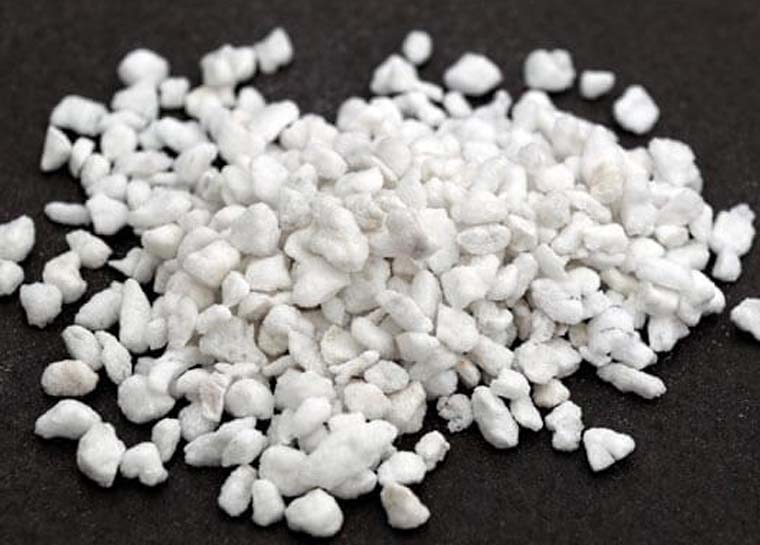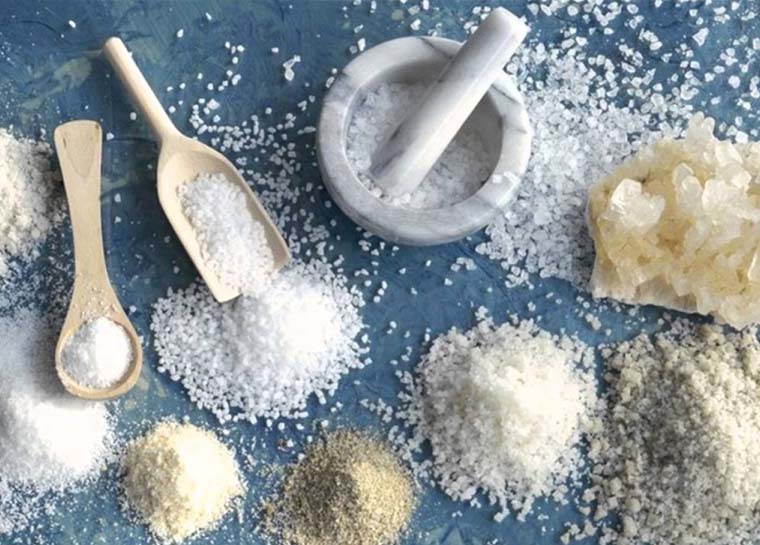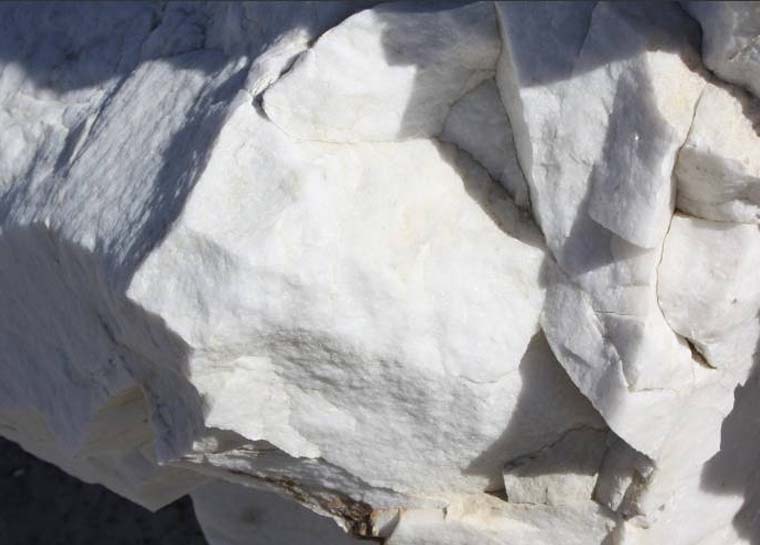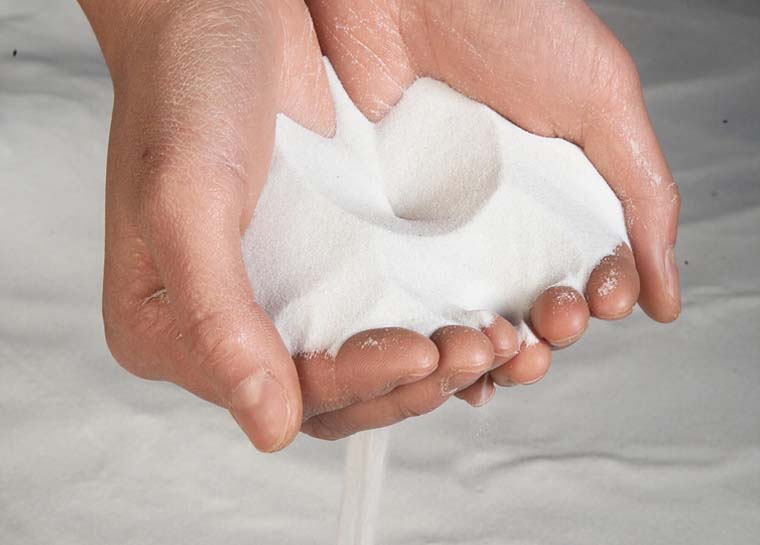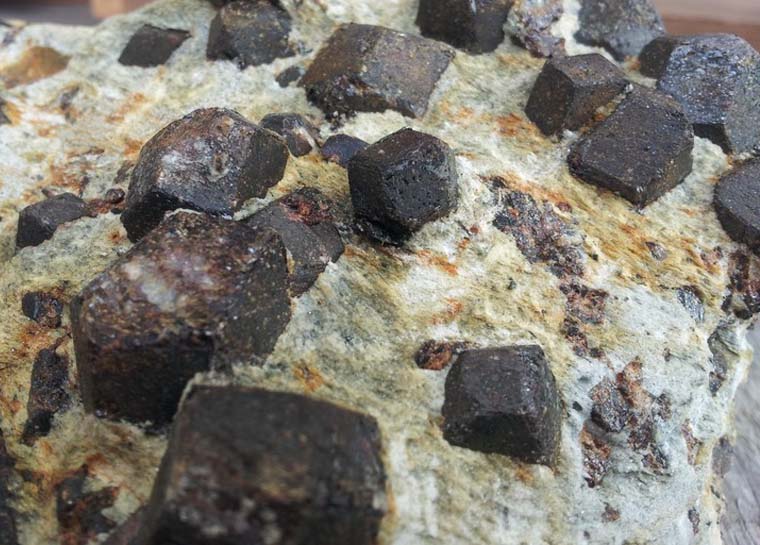Perlite
Perlite is a volcanic glass known in the 3rd century BC.The exact details of the discovery of perlite have been lost over time, and there is disagreement about the rediscovery of perlite as a commercial material. Some scientists believe that perlite is caused by hydration of horseradish and the water in it, is molecular and hydroxyl. The ratio of the amount of these two types of water depends on the amount of calcium and magnesium oxide. Perlites are unstable and begin to crystallize over time and then lose their original properties. Most of high-quality perlites belong to the third and fourth geological periods. If perlite becomes altered, it will converted to montmorillonite, opal and chalcedony.
Prior to World War II, this substance was rarely explored, Overall, it has not been long since perlite was discovered as an industrial material. Until 1928, they only knew that there were some volcanic glasses that would increase in size in the face of sudden temperatures. On 1940 experiments were performed on perlite in Arizona ores, and finally in 1946 perlite processing began for industrial use. In the early years, perlite processing grew rapidly, but gradually continued to grow at a slower rate, with 558,000 tons of perlite mined in 1968.
The discovery of perlite is attributed to a dentist in the United States. Around 1914, while experimenting with tooth enamel, he discovered that perlite had swelled due to rising temperatures. Meanwhile, a geologist at the head of a barite and silver mining company found that the sand had swelled as a result of a fire on the coast of the Greek island of Mylos while pouring beach sand on the fire to put out the fire. Thus the idea of using these volcanic rocks, which formed most of the Greek islands, was conceived.
Preparation of expanded perlite
First, perlite is crushed and then granulated. The granulated perlite is first directed to the preheating section and then guided to the furnace. The furnace temperature is set between 700 and 1100 ° C based on the chemical composition and the amount of perlite water. It expands inside the furnace and is raised by air flow. Wastes falls to the bottom of the furnace.
Applications of expanded perlite
Important uses of expanded perlite include making lightweight concrete and thermal and acoustic insulation, fillers, agriculture, and as a filter and abrasive. Perlite can be mixed with cement in various proportions to make lightweight pieces of concrete. Perlite mortar is lighter than cement one and has less thermal conductivity, and absorbs more sound. Used in painting, plastics, rubber and insulating the empty space of double-walled walls. Perlite sheets can be made with the help of perlite and an adhesive such as gypsum. These panels are light weight and are used as good thermal and sound insulation. Sound-absorbing plates are made from a mixture of perlite and pressed asbestos.
Thermal insulations: A mixture of perlite, asbestos and an adhesive such as gypsum is used as an excellent thermal insulator, which is used to insulate tanks and pipes up to 1000 ° C.
Gardening purposes: There are important benefits to adding perlite, including high water absorption and retention, which prevents water from evaporating and leaving water in the soil for a long time. The constant wetting of the soil reduces the soil’s need for water, thus preventing leaching of soil nutrients. The presence of pores in the perlite in the soil increases the exchange of materials and soil, and the roots of the plants grow easily in the soil.
Ceramic industry: Quartz and feldspar can be substituted for porcelain in order to prepare the silica, alkane and aluminum elements required for ceramics. Perlite can be used in the preparation of colored glazes. In floor tiles and bathrooms, perlite replaces feldspar by 12% to 35%. Perlites have been found to be suitable in electrical ceramics and fiberglass.
Cement industry: Used to produce pozzolanic cement and concrete.
Synthetic Zeolite: Suitable raw material for the preparation of various types of zeolites using thermal solutions.
Abrasives: Perlite with a hardness of 5 to 6 mohs is used as an abrasive.
Metallurgical industries: If raw perlite is applied in layers on the molten material, it prevents the molten material from oxidizing, reducing the temperature rise and collecting slag.
Applications of raw perlite: Raw perlite is used in industries such as ceramics, sieves, electrode fabrication, cement production, explosives, metallurgy, synthetic zeolite production, filters and filters, and glass fiber fabrication.
Perlite in Iran
For the first time in Iran in 1971 J. Eftekharnejad, in the southwest of Ferdows on the Paleogene vulcanites of the area, finds and studies a large layer of obsidian. He later finds out that this area of the wide horizon is being traced And in principle, perlite features are widely evident in this area. During geological surveys in the Miyaneh region, it again observes perlite features in the volcanic areas of this region. In order to explore, groups are sent to the area, and after reviewing the results of the preliminary studies, a wide perlite horizon in the area is finally illuminated. Due to the proximity of this horizon to the sales market, further exploration work on this horizon will lead to the issuance of exploration licenses. Then, in the process of geological surveys in eastern Iran, within the framework of the East Iran project, a pile of perlite is detected within the scope of work of the Geo-metal Company, which is reflected in the Gonabad-Ghaen quadrangle. Meanwhile, in 1976, the first organized research to achieve, organized by experts of the Geological Survey in the Miyaneh region, which discovered large accumulations of this material east of the Miyaneh-Tabriz road, in the Sefidkhaneh area, 46 km northeast Miyaneh and the areas around Tarom village and Abak area in the west of Miyaneh city.

